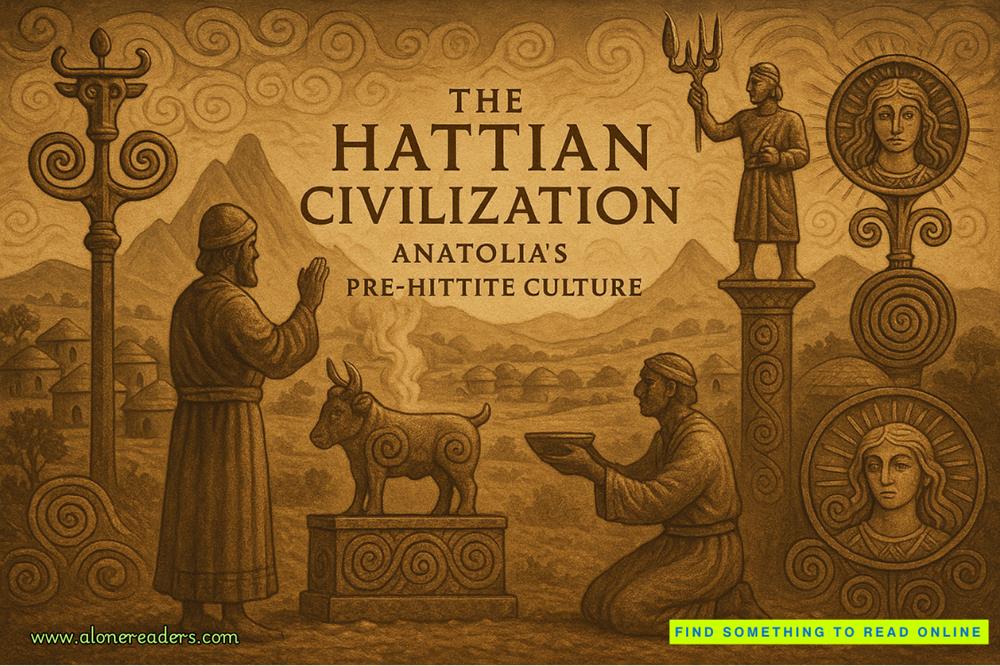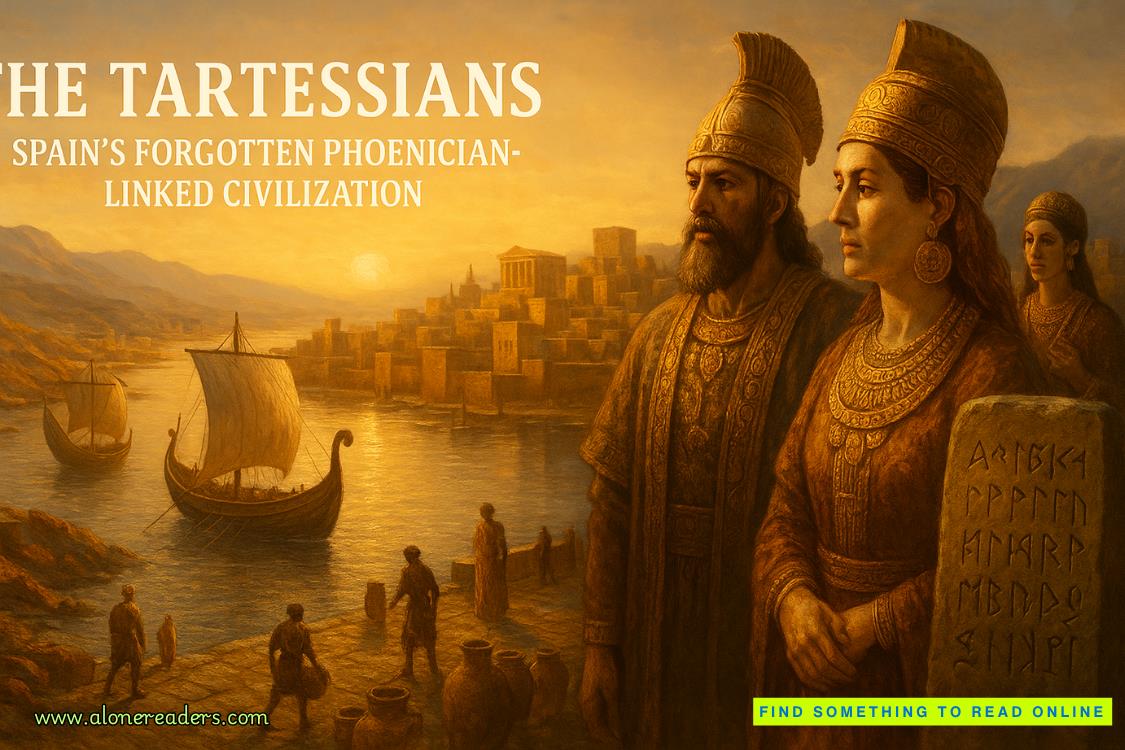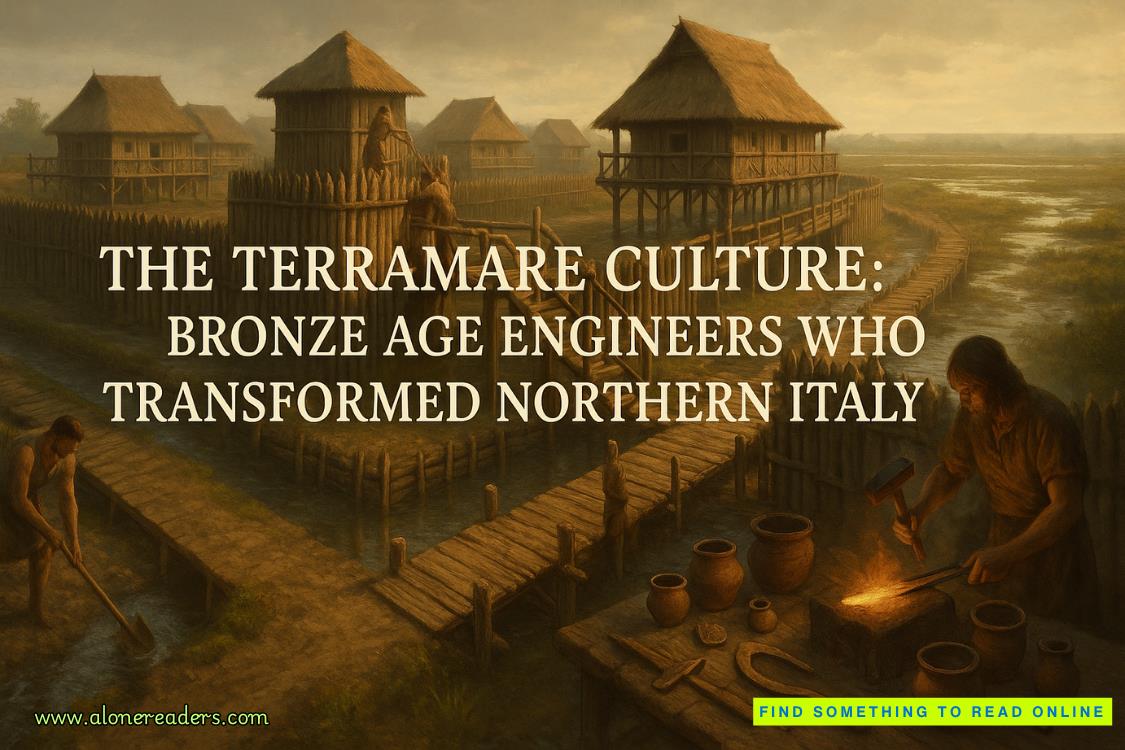He nodded in acknowledgment, but the nod was followed by a baffled head shake. “I don’t get it,” he said. “Up to now, we’ve got nothing but white-guy teeth and white-guy bits—specifically, Richard Janus bits.” He gestured at the last remnants of wreckage: shards of instrument-panel glass; bundles of burned wire; control levers and pedals; the empty, mangled framework of the windshield; the crushed cone of the nose. “We’re all but done. How can we just now—just as the buzzer’s sounding—find the very first sign of Running Bear or Miguel or whoever the hell this is?”
“Dunno,” I said. Then I realized that I was a half step behind him. “You’re right, it makes no sense. How could anybody be deeper in the debris than the pilot?” My mind began to race. “Maybe . . .” Bending down, I tugged at the piece, as Kimball had just begun to do when he’d spotted the tooth. “Maybe,” I grunted, “he’s not in the debris. Maybe he’s under the debris.”
“Come again?”
“Maybe he was already here when the plane hit.”
“What are you saying, Doc? You think there’s an old Indian skeleton under here?”
A flicker of movement caught my eye—an iridescent, blue-green flicker, almost like the dot of a laser pointer in midair, just above the edge of the flattened metal—and I felt a rush, as if someone had just injected pure adrenaline into an artery. “No,” I said, pointing at the iridescent dot. “See that? That’s a blowfly. Blowflies aren’t attracted to old skeletons; they go for ripe, juicy carcasses. I’m thinking we’ve got a fairly fresh body under here.”
“What? How?”
“Dunno,” I said again, this time with considerably more excitement. “Who would be up here? A hiker? A hunter?” Suddenly it hit me. “A border jumper. We’re only two miles from Mexico. Maybe it’s somebody who died after sneaking across the border.”
McCready considered this. “Seems like a stretch. A lot of ’em die crossing the desert in Arizona. Dehydration—some of ’em end up walking a hundred miles or more before they keel over. But five miles from Tijuana and the outskirts of San Diego?”
I looked up at the bluff. “Not dehydration. Trauma. A fall—maybe in the dark. If he fell from up there and landed on his head, his skull would’ve burst like a melon.”
McCready looked dubious. “So Miguel here takes a nosedive, and then—a day or a week or a month later—our guy Janus just happens to pile on? Exact same spot? Sounds unlikely to me.”
It sounded unlikely to me, too. But that scenario was only a fraction as unlikely as the death scene we uncovered ten minutes later, when Kimball finished the rigging and the crane peeled the aircraft’s nose from the face of the rock.
“Holy shit,” McCready breathed.
I looked around. “Where’s the camera?” I demanded. “We gotta have pictures. Otherwise nobody will ever believe this.”
I needn’t have said it. Kimball was already snapping pictures. As the camera click click clicked, behind me and beside me, images of the tableau began etching themselves indelibly on my mind: the hunched, crouching position of the flattened man; the arms, flung upward in a frantic, futile attempt at self-preservation; inches above the bones of his hands, the head and forelegs of a mountain lion, caught in midair, crushed against the rock. Shielded from the worst of the fire by a layer of aluminum, these two corpses—man and beast; prey and predator—had escaped the incineration that had consumed the fragmented remains of Richard Janus.
I had worked a few other death scenes that had preserved, with freeze-frame precision, the drama of the deaths. I’d uncovered one of those in the rubble of a house that had burned near the Tennessee-Virginia border four years before, in the spring of 2000. Deep in the smoldering basement, seared to the concrete slab, I’d found the bones of a man’s pelvis and legs—and, oddly, only his pelvis and legs. Thirty minutes later, and ten feet away, I found the rest of his skeleton—his skull, spine, and arms—as well as a nickel-sized disk of melted lead pooled beside the vertebrae. The man had been shot first, I realized, then blasted in half by dynamite, in an attempt to destroy the body. When that had failed—it’s actually quite difficult to destroy a body—the killer had finally torched the house, hoping to make the death look accidental. He might have had a better chance of getting away with it if he’d reunited the two halves of the corpse . . . and if he’d removed the bullet from the dead man’s spine. Fortunately for our side, most killers aren’t geniuses.
My thoughts flashed back to ancient Pompeii, where an entire city had been entombed in volcanic ash: people lying side by side in bed, or sitting on their doorsteps; even dogs dying on their backs, pawing at the choking air. Then my mind took me back even further—nearly three thousand years back, to ancient Persia, where an invading army sacked and burned a citadel called Hasanlu. As the fire raged around the warriors, the citadel’s main tower collapsed, toppling onto a stairway, flattening three soldiers in midstride as they ran for their lives. Two of them were side by side; the third man—slightly faster, and forever a few feet ahead—carried a large, ornate vase of pure gold. He clutched the vase—a death grip, in the most literal sense—for thirty centuries, as armies and empires and religions rose and fell above him, just as Hasanlu itself had arisen and flourished, then fallen and vanished. In the end, the gold vase was wrested from the soldier’s grasp, not by a pursuing warrior, but by an invader of a very different sort: a scrawny, twentieth-century American archaeologist, armed only with a trowel and a camera—a man who was every bit as astonished by the transaction as the skeletal soldier himself would have been.
Motionless on the California mountainside—part of the tableau myself, though only temporarily—I stared at the dead predator, then at the intended prey. “Lucky guy,” I said.
“Yeah,” said Kimball. “He was real lucky.”
I smiled. I hadn’t meant the dead man. I’d meant myself, for having lived to see such a thing. So very unlikely. So very dreadful. So very beautiful.
My bubble of gratitude burst a moment later, when McCready added, “Prescott is gonna hate this.”
AS I STEPPED THROUGH THE GREEN-GLASS DOOR AND into the green-glass lobby of San Diego’s federal courthouse, I had the odd sensation of plunging into an aquarium, surrounded on all sides by glossy walls, through which I could see brightly lit people outside in the open air, some of them peering through the glass at the submerged specimens. After days in the windswept wilderness atop Otay Mountain, being downtown and indoors was doubly disorienting. The tie I’d cinched around my neck felt more like a noose than a fashion accessory.
The FBI had scheduled a noon press conference at the courthouse to report the positive identification of Richard Janus’s body. The plan was straightforward: As the case agent, Prescott would make a brief statement, then hand the microphone to Maddox, the NTSB investigator, to summarize his preliminary crash findings; after that, I would explain the specifics of the identification. It was a no-nonsense, tightly scripted affair, one that would answer a few basic questions but leave others hanging, cloaked in the mystery of an ongoing investigation.
The media briefing would be Act Two, though. Before that, we had to get through Act One, a private briefing for Richard Janus’s widow. Prescott led Maddox and me into a conference room outfitted with thick carpet, warm paneling, and heavy drapes. Inside, at a large oak table, sat Carmelita Janus, flanked by a dark-suited man who looked to be a lawyer, and a woman who Prescott had told me was an FBI victim specialist.
Even in grief, Mrs. Janus was striking. I’d noticed it from a distance the day she’d stepped out of the helicopter, hair swirling in the rotor wash; I noticed it even more now, sitting four feet across a table from her. A black-haired, brown-eyed, olive-skinned beauty, she came from an aristocratic family in Mexico. I’d seen dozens of pictures of her in Airlift Relief’s newsletters—clad in cargo pants and a sweaty T-shirt, helping unload medical supplies and food for earthquake survivors in Peru; draped in a designer gown, mingling with celebrities at a Hollywood fund-raiser;
wearing stained mechanic’s coveralls and wielding a wrench, helping Richard change the oil in a DC-3—and none of the pictures was unflattering. For this meeting, she wore a simple black dress, with a single strand of pearls around her neck. Her eyes were red-rimmed and weary-looking, but glittering with anger as well.
I had expected Prescott to make introductions, but the lawyer-looking guy spoke first. “I’m Martin Janus, Richard’s brother and attorney and executor. I’m here today in that capacity, but also, primarily, as counsel for Mrs. Janus. Just so we’re clear, we won’t be answering any questions today, so don’t waste your time asking. This whole series of events has been unimaginably traumatic. The FBI’s heavy-handed tactics and intimidation drove a good man—a dedicated humanitarian—to his death.” I glanced at Prescott; I suspected this had something to do with the FBI’s operation and with the interagency pissing contest, and I felt sure that Prescott knew exactly what the man meant. But if so, he hid his knowledge well, for his face was a chiseled mask, devoid of expression. “We appreciate the chance to hear what you’ll be releasing to the press. More advance notice would have been considerate, of course. But better to hear it face-to-face than on television. So. Tell us what to expect.” Having finished his curt speech, he sat back in his chair, laying a hand over one of Mrs. Janus’s and giving a quick, reassuring squeeze.
Prescott ignored the attorney, focusing entirely on the widow. “Mrs. Janus,” he began, his tone matter-of-fact, “these gentlemen are experts who are assisting us with the crash investigation.” He gestured first toward me. “This is Dr. Bill Brockton, a forensic anthropologist from the University of Tennessee. He’s an expert on skeletal trauma and human identification.” I half nodded, half bowed, conveying what I hoped was both professionalism and sympathy. Her eyes searched mine, as if trying to read my findings there, but Prescott kept going. “And this is Mr. Patrick Maddox, a crash investigator from the National Transportation Safety Board. Mr. Maddox has been analyzing the accident site, the aircraft debris, radio communications, and the plane’s flight path from the time it took off until the time it crashed.”
Maddox also nodded; Mrs. Janus’s eyes seemed to be searching his face—as if she were trying to place him from some prior meeting that she couldn’t quite recall—but then Prescott barreled ahead and her attention returned to him. “As you know, Mrs. Janus, we’ve not yet completed our investigation—of the crash or of your husband’s activities. But we have positively identified his remains in the aircraft wreckage, and we wanted to share that as soon as possible with you.”
One of her eyebrows arched upward cynically. “With me? Or with the media?”
Prescott ignored the jab. “As you know, from the media coverage and from your own visit to the crash site, the aircraft was almost completely destroyed by the impact and the fire. That made identifying your husband’s remains challenging. That’s why we brought in Dr. Brockton—he’s one of the country’s leading identification experts.”
She looked at me with what appeared to be a mixture of pain and doubt. “So Richard’s body was badly burned? ‘Burned beyond recognition,’ is that how you people say it?”
This wasn’t going to be easy, I realized. “Actually, Mrs. Janus, there was no body—not an intact one. There’s no delicate way to put this, I’m afraid, and I’m sorry about that. Your husband’s body was severely fragmented by the force of the impact. Fragmented and incinerated. Again, my apologies for being so blunt.”
Her gaze didn’t waver. “You’re saying that all you found were burned bits and pieces of him?” I winced, then nodded reluctantly. “Then how can you be sure it’s Richard? Have you done DNA testing?”
“No, ma’am,” I said. “DNA tends to be destroyed by fire, although it’s possible we could find some in the teeth.” I touched the side of my jaw. “The molars can sometimes protect the DNA, if the fire’s not too hot. But the best way to make an identification in a case like this—the fastest and most reliable way—is to match the teeth to dental records.” I slid a manila folder across the table to her. “We’ve recovered almost all the teeth, and several of them had very distinctive features, which we were able to match to x-rays and photographs.” She opened the chart and looked at the top image—a close-up of the chipped incisors we’d found—and then flipped to the second photo. When she saw it, she flinched, and I mentally kicked myself for not having warned her about the photo. It was an eight-by-ten enlargement of her husband’s smiling face, his lips parted in a broad, boyish grin, red arrows pointing to the chips in the central incisors. Like seeing a ghost, I thought, flushing at my insensitivity. An annotated ghost. Regaining her composure, she leafed more guardedly through the remaining images: more close-ups of teeth—the corkscrew-root canine and the Carabelli-cusp molar—followed by dental charts and x-rays. She paused when she came to a photo that showed a tangle of burned wires and circuitry. “That’s a spinal cord stimulator,” I told her, “or what’s left of it. According to your husband’s medical records, he had it implanted three years ago. To help alleviate back pain.”
“I am aware of why he had it implanted.”
Her rebuke was subtle, but it was there. And it was probably justified. She looked up at me, so I went on. “The next page is a copy of the spinal x-ray he had taken after the surgery. You can see the electrical leads going into the spine; the impulse generator was implanted just under the skin on his left hip.”
“I know where it was implanted,” she said—another rebuke—still studying the x-ray. “And you found this in his body?”
“Well,” I said, somewhat off balance, “as I mentioned, the body was . . . not intact. But yes, when we removed the frame of the pilot’s seat, we found the device with the bones of the pelvis and the spine. The teeth are really the basis for the positive identification of your husband’s remains; the spinal cord stimulator is just added corroboration.” I expected her to ask more questions, but she gave a brief nod, closed the folder, and slid it aside to her brother-in-law. Prescott nudged me and nodded, so I reached into my jacket pocket and pulled out a small envelope. I had expected him to do this part, but he’d demurred, delegating it to me. “We also found this,” I said, handing her the envelope. “I think I’ve seen it in pictures of Richard. In the newsletter.”
“The newsletter?”
“Yes, ma’am. My wife and I are . . . We’re on the Airlift Relief mailing list.”
“I see,” she said, her tone neutral and her expression unreadable. As she turned the envelope to raise the flap, the chain inside shifted and slid, rasping softly. As she opened the envelope and tipped the pendant into her palm, she gasped and seemed on the verge of a sob, but she squelched it—fought it back might be more accurate—as if she felt it important not to reveal any weakness or emotion to us.
After a few moments of awkward silence, Prescott cleared his throat to get her attention. “Mrs. Janus, there’s something else we wanted to let you know before the media briefing,” he said. “In addition to your husband, we found the remains of another person at the crash site.”
Her eyes widened, and she clutched at her brother-in-law’s hand, the tendons in her hand pulled taut as bowstrings, a spiderwork of ropy blue veins crisscrossing above them. “Who?”
“We don’t know his name yet,” Prescott told her. “But we believe he was an illegal immigrant from Mexico. Apparently—”
She cut in. “But who was he? What was he doing on the plane?”
“He wasn’t on it,” he said, and she looked baffled—as baffled as I had felt the day before, when we’d found the bodies of the man and the mountain lion. “Apparently he was on the ground when the plane hit,” Prescott explained. “Wrong place, wrong time. We think he’d crossed the border recently—possibly even the night of the crash. If Dr. Brockton is correct, the man took a fall in the dark and was lying there, injured, when the plane hit.”
“My God,” she breathed. “That poor man.” Oddly, she seemed more upset by this stranger’s de
ath than by her husband’s. I remembered Prescott’s questions about Richard’s life insurance policy, and for the first time I found myself wondering if she might have had something to do with her husband’s death. Was she unhappy in the marriage? Could she—a Mexican, after all—be the real link to the drug lord Guzmán? I felt her eyes on me, and I realized that I was staring at her intently. I flushed, hoping she wasn’t able to read my suspicious thoughts. After a moment, she turned back to Prescott. “Are you sure that this other man’s death was just a coincidence?”
“Not a hundred percent,” Prescott conceded. “But it’s the best explanation for what we found. I’ll let Dr. Brockton explain it in more detail.”
She looked at me again, her face neutral and masklike now. Opening a second manila folder, I pulled out four photos and slid them across the table to her. “The picture on top shows the wreckage of the aircraft’s nose. The nose hit first, obviously, so it was the last layer we got to as we excavated down through the debris.” Her eyes flicked rapidly across the image, scanning and then lingering, scanning and then lingering, and I wondered if she was searching the image for traces of her husband’s remains. When she looked up, I continued. “The next picture shows what we found underneath the nose—crushed between the nose and the rock face of the mountainside.” She flipped to the second photo. As she studied the image, her eyes narrowed, and I could tell that in spite of herself, she, too, was fascinated by the grim tableau. “As you can see, the man wasn’t alone on the mountainside when the plane hit. There was a mountain lion just above him—in the act of pouncing on him, as best we can tell—at the moment of impact. It’s like a freeze-frame image of the moment they died.” She shook her head slightly—not in doubt, I sensed, but in wonder. “The last two pictures are close-ups. As you can see from those, the man and the mountain lion were crushed directly against the mountainside—frankly, if you’ll forgive my bluntness once more, we had to scrape them off the rocks. That tells us they were definitely outside the plane, not inside.”















